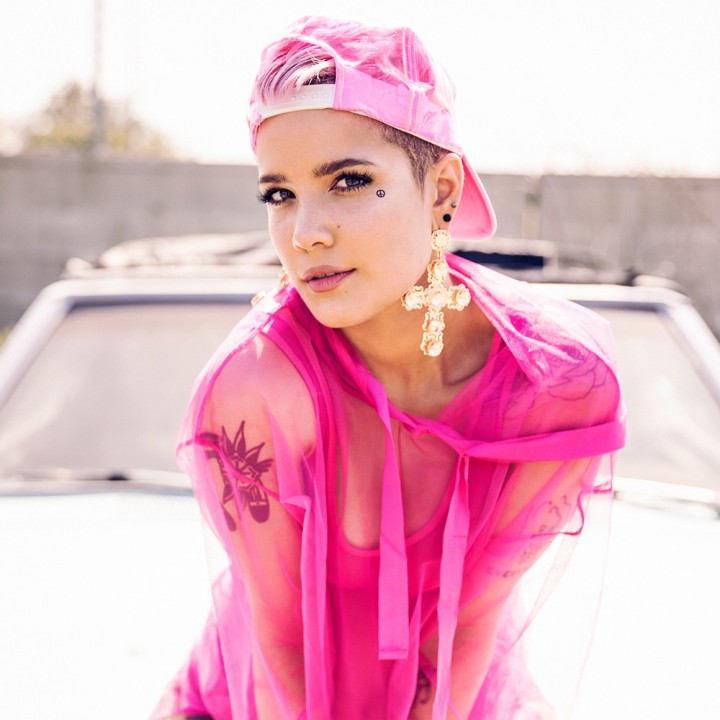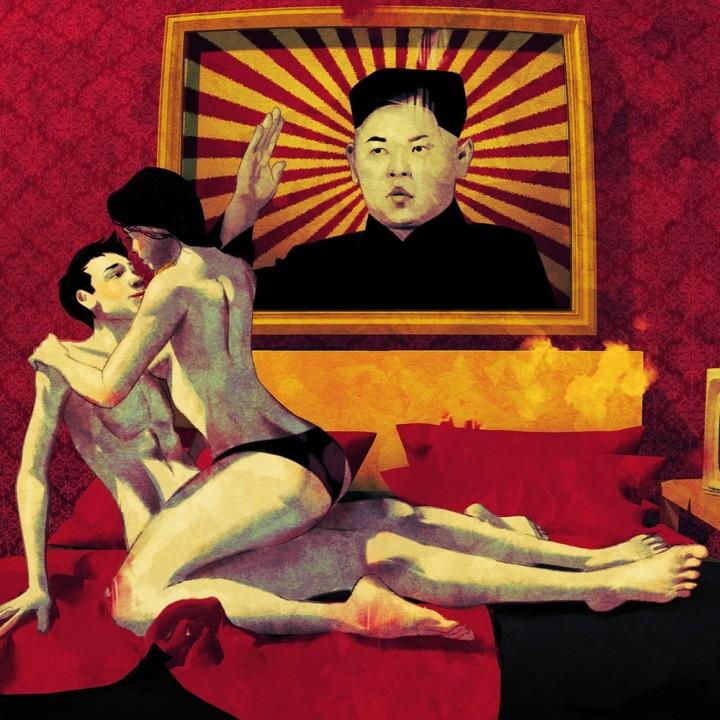
What a Trip: Celebrating the Past, Present and Future of Psychedelics
Swiss scientist Albert Hoffman took a terrifying bike ride 75 years ago. Fearing he’d poisoned himself, the commute and the hours that followed, were plagued by anxiety, fear, weakness and the belief that his neighbor was a witch. Eventually, the terror gave way to an appreciation of the “kaleidoscopic, fantastic images” that clouded his vision. Now known as Bicycle Day, Hoffman’s adventure constituted the first self-administered lysergic acid diethylamide, or LSD, experience.
By the 1960s, psychologist Dr. Timothy Leary had begun psychedelic experiments on humans and said along with therapy, hallucinogens could aid in behavior modification in criminals and resulted in life-altering spiritual experiences. Often controversial, Leary helped popularize LSD, which was taken recreationally, and thus shaped a cultural movement with quotable slogans like “Turn on, tune in, drop out” to engage with consciousness but to disengage with “involuntary or unconscious commitments,” he later wrote in his 1983 autobiography. In 1968, LSD was banned in the United States and research was put on hold until a resurgence in the 1990s helped usher in a new wave of psychedelics research as a tool in psychiatric treatments for PTSD, trauma and addiction.
Three-quarters of a century since Hoffman’s first trip, psychedelics (LSD, mescaline, psilocybin, and DMT) are still culturally present. While working to dismantle the counterculture stigma of the 1970s—that the drug serves no purpose outside of mind-altering insanity—leaders in the field, researchers, activists and pioneers, are confident the pendulum is swinging toward center. “Things have changed positively,” says Dr. Ben Sessa, psychiatrist, psychedelic researcher and author of The Psychedelic Renaissance. “We have a plethora of research institutions carrying out psychedelic research. It’s not some crazy fringe research. It’s mainstream psychedelic medical culture.”
By the early 1990s, scientists began to reexamine the effects of psychedelics in psychiatry. Researchers like Sessa and groups such as the Multidisciplinary Association for Psychedelic Studies (MAPS) have made significant breakthroughs in the science surrounding hallucinogens despite the drug’s Schedule I classification, meaning it has no medical use and a high potential for abuse. (This distinction makes obtaining the drug for trials difficult; scientists need approval from the FDA.)
Founded in 1986 to further research and educate in the psychedelic and marijuana spaces, MAPS developed the first pilot study on MDMA as a treatment for Post Traumatic Stress Disorder in 2010. Twenty patients with the disorder were administered either a placebo or MDMA during two eight-hour therapy sessions. Researchers monitored participants’ stress levels four days after each session and two months following the last session. Those who had taken MDMA had significantly lower PTSD-scale levels than those who had taken a placebo. The scientists also noted the drug’s relative safety during the trial. Phase 2 trials showed that 61 percent of the 107 participants no longer had PTSD two months following three sessions of MDMA-assisted psychotherapy; after a year, 68 percent no longer had PTSD. Phase 3 is set for this year. If all goes well, the Food and Drug Administration could approve MDMA as a prescription for treating PTSD by 2021.
Paired with therapy, MDMA could provide substantial care for those experiencing trauma, which often requires long-term treatments. “It fits a different model of healing than other pharmaceuticals,” says Brad Burge, director of communications at MAPS. “Instead with psychedelic therapy, it’s a much broader concept that involves emotions, embodied awareness, and using a drug to assist therapy instead of using a drug to directly treat.”
We have a plethora of research institutions carrying out psychedelic research. It’s not some crazy fringe research. It’s mainstream psychedelic medical culture.
In the UK, Sessa’s been working on the first-ever study on MDMA for alcohol addiction. Taking a similar approach as the MDMA-assisted PTSD treatment, participants will take doses of the drug along with therapy to hopefully quell addiction.
A host of other recent studies showed promising results, too. In 2012, researchers analyzed the results of six trials to determine LSD’s efficacy as a treatment for alcoholism. In the trials, over 500 participants were given one dose of LSD paired with alcohol treatment programs. It was found that this combination was associated with a decrease in alcohol misuse. Scientists in 2016 found that a single dose of psilocybin with psychotherapy can reduce anxiety and depression in cancer patients and a similar study revealed LSD can also act as an anxiety reducer in cancer patients. Psychedelics are seen as having positive impacts on the lives of even relatively healthy people. A 2017 review suggests that the drugs could improve well-being if taken in an appropriate dose and in a safe environment.
Personal experience with PTSD taken with psychedelics as a therapeutic aid inspired Zoe Helene to work with women to help heal “wounds and demons from the patriarchy.” After an ayahuasca ceremony relieved her of PTSD symptoms, she began championing a feminist psychedelic movement which includes frequent Amazonian retreats—where the drug is legal—led by local experts to ensure a culturally sensitive ritual. Over the course of a week and four ayahuasca experiences, she ushers women through an unburdening of past trauma. “It’s not about taking something and going out and having a party,” Helene says. “I’m more interested in journeying and exploring the wilderness within and learning about yourself and moving forward, whether that means letting things go in the past.”
Perhaps the most notable trend in psychedelics is microdosing, where people take low (and still illegal) doses of LSD or psilocybin every few days in the hopes of bolstering productivity and creativity. It’s particularly popular in Silicon Valley. In 2017, writer Ayelet Waldman discussed her experiences with microdosing in her book A Really Good Day: How Microdosing Made a Mega Difference in My Mood, My Marriage, and My Life, further pushing the movement into more everyday territory. Over the course of 30 days, Waldman documented her microdosing experiences and found that she was less temperamental and happier overll. Still, there is very little clinical research that supports any of these claims.
Recognizing microdosing’s potential, Paul Austin, founder of The Third Wave, a platform for psychedelic advocacy and information, began offering resources and coaching for people looking to optimize their overall well-being. The topic of microdosing, he says, introduces people to the psychedelic space, the first step in normalizing societal perception around the drugs and for the practice to become more mainstream. “If psychedelics were to be something utilized by a mainstream population, to be used outside of a clinical setting, then we have to start building a cultural dialogue,” Austin says, “so people can become psychedelic literate—they have a basic framework of psychedelic substances—and amplifying that message through the topic of microdosing.”
Austin recognizes, however, the privilege surrounding microdosing: It’s a trend that appeals to a specific demographic. “There’s what’s legal, there’s what’s illegal, and there’s what we call the grey area which is basically—and this is going from what I’ve come to understand—law enforcement is not particularly concerned … with a trend that’s largely upper to middle class white people.”
Even if the FDA approves psychedelic use for medical purposes, they would still be highly criminalized and only available for those who have the means to obtain them, says Jag Davies, director of communications strategy at the Drug Policy Alliance. “The people who would benefit from that are more often than not privileged in our society and are not suffering the worst of drug prohibition,” says Davies. “There needs to be a complementary approach to criminalization. For example, putting in place policy that will reduce arrests. People think barely anyone gets arrested for psychedelics, there are still thousands of people every year who are young and people of color compared to the overall psychedelic population are getting arrested. Getting psychedelic therapy approved isn’t going to help them that much.” Continued public education on results of clinical trials and best practices for safer partying would minimize the stigma around psychedelics and move the needle toward ending possession arrests.
The goal of changing public mindset lies at the root of much of the work in the psychedelic space. Many of the depictions of LSD from the 1960s paint a portrait of wild partying and death resulting from related accidents and suicides. While considered non-addictive, no drug comes without risks. Psychedelics have been known to result in panic, dangerous behavior and continued hallucinations. “Culture is sticky like that,” says Burge. “Even though cutting edge technology is advancing, there's still memory and memory can be a challenge when you're making big changes.”
It’s a chicken or the egg situation when it comes to the stigma surrounding hallucinogens and its distinction as a Schedule I drug, Burge says. Some research institutions may be hesitant to enter the space because of the negative connotations associated with the drugs, however such implications were made before controlled studies, which began in the ‘90s, were performed. “The schedule says that these are drugs that have no medical benefits,” he continues, “that assumes that the research has been done.”
Society also has a tendency to lump drugs into categories like “good” and “bad,” says Davies. It’s been determined that psychedelics fall into the latter due to messages supported by the War on Drugs. “Even though there’s been all this progress with psychedelic research, the vast majority of the public still believes that they cannot be used safely and in moderation outside of medical context,” he says.
Austin, however, is optimistic and notes that scientific breakthroughs and increased awareness through popular culture and personalities like Tim Ferriss and Joe Rogan have helped to change the tides. “We’re looking at cultural leaders who are openly speaking about their psychedelic use,” Austin says. “That, from my perspective, is what accelerates the cultural education process. I think it’s making things more accessible to people in that it’s getting a wide swath of people to engage with the topic who have not engaged with it prior.”







